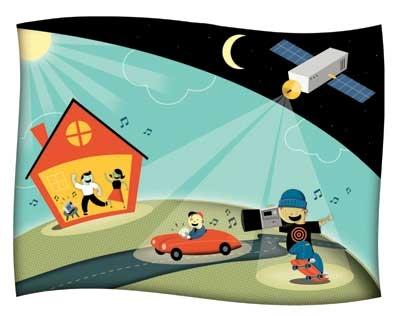Satellite Radio: Here, There, Everywhere

When they first got off the ground - literally -about three years ago, the XM and Sirius satellite radio services focused their attention on the millions of people who get into their cars and drive somewhere every day. Driving and listening to the radio go together like popcorn and movies, and a lot of people turned to satellite broadcasting as a way to eliminate the reception headaches that can plague listening to FM radio in a moving car.
But then a curious thing happened. Many of the folks who were drawn to satellite radio for its stable, noise-free reception found they didn't want to leave it behind when they parked their cars. Ultimately, it was the wide range of programming available on Sirius and XM that kept them tuning in for more.
Even in the most vibrant radio markets, like New York and L.A., you can usually cleanly pick up maybe 25 FM and a dozen or so AM stations. Now, consider that each of these stations is competing for the biggest possible slice of the available audience, and it's no surprise that many of them seem to play Avril Lavigne or Lynyrd Skynyrd 24/7. That might be okay for a while, but even "Freebird" gets tedious after the 20,000th time, and soon most people are groping for their radio's seek button. Add in those 10-minute-long commercial breaks that tend to alienate listeners, and it's easy to see why so many people have been yearning for a better option. Both Sirius and XM offer around 120 channels, but - and this is key - on each system no channel is in competition with the others. This means there can be channels that are highly focused in a way that would be commercial suicide in the big, bad world of traditional radio. How about a channel with nothing but folk music? Or maybe only Broadway show tunes? Well, both Sirius and XM have one of each. Sure, the two services are competing against each other, but because most customers choose between them based on the selection of channels each service offers, this competition actually encourages diversity and specialized programming. Another huge plus is that both systems keep their music channels commercial-free, letting you enjoy music all day without having to sit through endless sales pitches.




























































